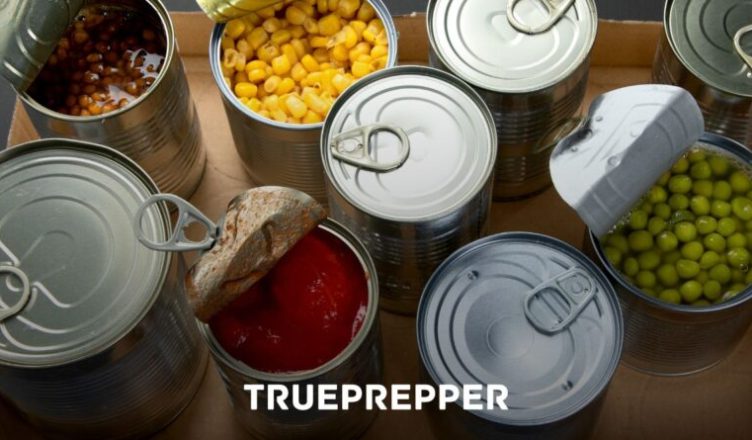In the world of long-term food storage, canned food still stands as one of the best options. Canned food is widely available, easy to store, has a long shelf life, and is typically cheap. There is a wide variety so you can find the best canned foods for your crowd at home based on their taste buds and the nutritional value of what you are storing.
Dehydrators, freeze-dryers, and vacuum seals are great for food storage but store-bought canned foods have one thing on all of them: they are simple. One of the easiest ways to begin a food-storage plan is to simply buy a few extra canned goods at each trip to the grocery store. This method, called back stocking, can help you build an initial food storage supply. Later, once you add in more bulk goods, these can still serve to add variety and nutritional value to your survival kit.
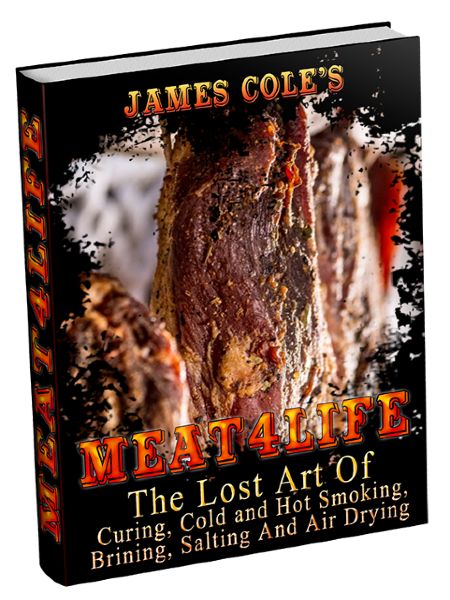
The 10 Best Canned Foods to Stockpile
Canned foods are usually one of the first things people get when they are starting off with their food stockpile. Cans are extremely cheap and easy to accumulate on regular shopping trips and have a massive shelf life when stored properly. Getting the right mix of cans based on your needs can be tricky, so we highlight the best canned foods to stockpile below based on calories, macronutrient content, and meal variety.
We focused on grocery available canned foods to keep it simple, which are usually smaller. Larger cans, like #10 cans have their place in preparedness but these low serving-size cans are easier to find and are excellent for growing your food stockpile steadily. Let’s get to the canned food list:
Diced Tomatoes
We use diced tomatoes to make salsa with our homegrown peppers, so this is something that we are able to backstock easily in the pantry. Very cheap, versatile, and widely available.
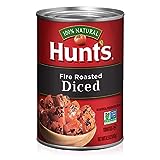
Corn
Corn goes great with all sorts of meals. The kids love it and it is an easy way to add a vegetable to the table.
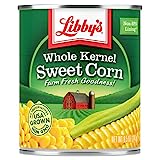
Green Beans
Green beans have been a long-time canned staple. Homesteaders may prefer growing and canning their own, but getting them from your local grocery store is quick and easy.
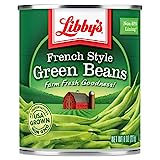
Baked Beans
Rice and beans are typically stored dry and do not need to be canned, but baked beans are just too good to pass up. They can add much-needed variety to your food stash and are usually a family favorite.
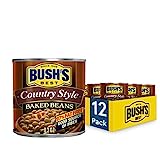
Tuna in Oil
I actually prefer Tuna in water- but in an emergency calorie content is king. The oil adds valuable calories instead of water. Stashing too much tuna- or any fish for that matter- could be problematic long-term with mercury content.
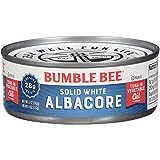
Chili with Beans
Chili is just one of those feel-good foods that happen to be great for emergencies. It is no surprise that it is one of our favorite MRE entrees. Luckily, it comes in a can and is dirt cheap.

Roast Beef
Protein power! Canned roast beef is a great emergency entrée. Just heat and eat.
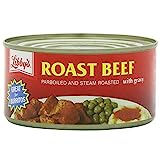
Beef Stew
Similar to the canned roast beef above, but even a little more versatile. You can splash other ingredients into the stew for different meals using the same building blocks.
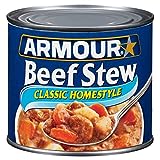
Chunk Chicken Breast
My wife uses this to make buffalo chicken dip and it’s crazy delicious. This lets us backstock our pantry with these cans pretty easily.
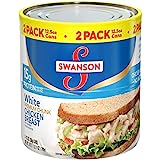
Hormel Spam
Good old SPAM. This Shoulder of Pork and HAM is about as versatile as it gets when it comes to canned meat. It has been a food storage staple for a long time and should not be surprising that it made the list.
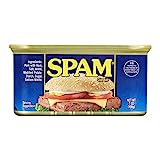
Canned Food Expiration
Holding canned foods past their printed expiration date is usually not a problem. One of the main reasons for expiration dates is that the taste is affected. There can be a few telltale signs when canned food is no longer good to eat:
- Bulging cans. This is an indication of temperature problems during storage or bacteria growth. Either way, don’t eat it.
- Leaking cans. If a can is dripping, oozing, seeping, etc- don’t eat it. A compromised canned good can go bad quickly.
- Open cans. If you open a can, plan to use it all. Resealing a can is difficult and does not trap sterile air back in the can. If a can has a hole in it and is already slightly open, don’t eat it.
Cans that don’t meet the cut for any of these flags aren’t completely useless: use them for target practice.
How to Store Canned Food
Canned food should be stored in a cool, dry place, away from direct sunlight and sources of heat. The pantry or a cabinet are usually the best options. Avoid storing canned food in damp or humid areas, such as a basement or garage, since this can make the cans rust or get damaged.
Also, it’s a good idea to keep canned goods organized and rotated so that the oldest cans are used first. The method of doing this is called FIFO (First In, First Out) and is the best way to make sure your canned food shelf life is the longest.
Buy Canned Foods You Like
You know you and your family’s preferences better than anyone does. Everyone in my family will gladly chow down on any of the canned goods listed above- especially the kiddos.
Don’t get into an emergency situation just to find out that nobody likes your emergency food.
Canned foods make it easy since they are usually something that your family is familiar with already. It can be surprising just how big of an impact something like a familiar meal can have during an emergency.
What Canned Foods Have the Longest Shelf Life?
Canned foods that have a high acid content, such as tomatoes, fruits, and pickled vegetables, typically have a shorter shelf life of 12-18 months. Low-acid canned foods, such as meats, fish, poultry, and most vegetables, can last for 2-5 years or even longer if stored properly.
Some examples of long-shelf-life canned food include:
- canned meat and fish (tuna, salmon, chicken, beef, etc.)
- canned fruits and vegetables (peaches, green beans, corn, etc.)
- canned soups and stews
- canned beans and legumes (black beans, lentils, chickpeas, etc.)
- canned juices
Even though they have a long shelf life, canned food should be inspected for dents, leaks, swelling, or other signs of damage before you eat them.
Can You Survive Off Canned Food?
It is possible to survive off of canned food, but it is not ideal as a long-term diet. Canned foods are often high in sodium and may lack some important nutrients that are found in fresh foods. Eating a diet that is primarily made up of canned foods may lead to deficiencies in essential vitamins and minerals, such as vitamin C and calcium. Additionally, consuming a diet high in sodium can lead to high blood pressure and other health issues.
It is recommended to have a balanced diet that includes a variety of fresh fruits, vegetables, lean proteins, and whole grains. Canned foods can be a convenient and easy way to add variety to your diet, but they should not be the main source of nutrition. If you have to rely on canned food for a long time, try to get a variety of different types of canned food and rotate them to get different types of nutrients. Additionally, you can also add fresh fruits, vegetables, and lean protein to supplement your diet.
Food Items to Stockpile for Emergencies
When stocking food for emergencies, it’s important to choose items that are non-perishable, easy to prepare, and have a long shelf life. Here is our go-to list of food items:
- Canned fruits and vegetables: These are a good source of vitamins and minerals and can be eaten as is or used in cooking.
- Canned meats: Tuna, chicken, and beef are all good options. They are high in protein and can be eaten alone or used in recipes and are found in our top 10 list above.
- Freeze-Dried Meals: Fill your pantry quickly with freeze-dried food. They can be expensive but have the longest shelf life. Here is our roundup of the Best Prepper Food Buckets.
- Peanut butter and other nut butter: These are good sources of protein and healthy fats. Check out our article: Peanut Butter as a Survival Food: Protein Packed in the Pantry
- Dried fruits and nuts: These are a good source of energy and can be eaten as a snack or used in recipes. We’re partial to Sunflower Seeds.
- Whole grain crackers, bread, and pasta: These are good sources of carbohydrates and can be eaten as is or used in recipes. Survival Bread is especially good for storing.
- Canned soup, chili, and stews: These are easy to prepare and can be eaten as is or used to make a more complete meal.
- Rice and beans: These are good sources of protein and carbohydrates and can be stored in dry bulk.
- Powdered milk: It’s a good source of calcium and protein.
- Water: It’s important to have a supply of clean water. Check out our Water Calculator to see how much you and your family need.
- Comfort food: Chocolate, cookies, and other comfort foods can be a morale boost during stressful times.
- Condiments: Condiments with a long shelf life can help make bland food more palatable.
It’s also important to keep in mind that you should store these items in a cool, dry place and rotate them regularly to ensure they stay fresh. And also to check the expiration date and discard expired items.
The Final Word
Canned foods are easy to find locally and can help boost your survival kit rations. Boost your calories, variety, and nutrition with canned foods. They are inexpensive, which can help any prepper; whether you already have a long-term storage plan or are just starting out.
Here are a few other articles our readers have found helpful:
- The Best Can Opener for Prepping and Survival
- 7 Essential Prepper Food Storage Containers
- Survival Food List | Pantry Stockpile Plan and Checklist
If we missed any of your favorite canned foods that you keep in your stash, be sure to let us know in the comments below.
Keep exploring, stay prepared, and be safe.
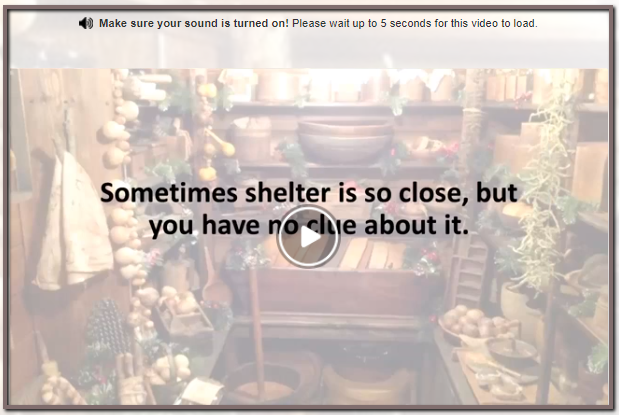
source : Rusty Collins

